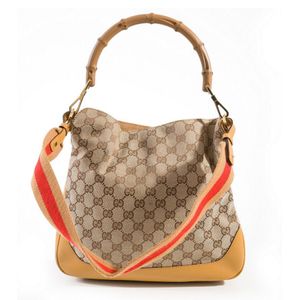Kangxi blue and white dish with Dutch silver handle
You must be a subscriber, and be logged in to view price and dealer details.
Subscribe Now to view actual auction price for this item
When you subscribe, you have the option of setting the currency in which to display prices to $Au, $US, $NZ or Stg.
- Ming Dynasty - The Ming Dynasty was a ruling dynasty of China from 1368 to 1644. It succeeded the Yuan Dynasty and preceded the Qing Dynasty. The Ming Dynasty was established by Zhu Yuanzhang, a former Buddhist monk who became a rebel leader and eventually overthrew the Mongol Yuan Dynasty. During the Ming Dynasty, China experienced a period of relative stability and prosperity. The government was centralized and bureaucratic, with the emperor at the top of the hierarchy. The Ming Dynasty is known for its cultural achievements, including the development of porcelain, the invention of movable type printing, and the construction of the Great Wall of China.
- Qing Dynasty - The Qing Dynasty was the last imperial dynasty of China, ruling from 1644 to 1912. It was established by the Manchu people, who originated from the northeastern region of China. The Qing Dynasty was preceded by the Ming Dynasty and followed by the Republic of China.
- Diaper Motif - The diaper motif is a repeating geometric pattern in decorative arts that consists of small diamond or lozenge shapes arranged in a grid. The pattern is often used as a background or border on textiles, ceramics, metalwork, and other decorative items. It can be found in a variety of cultures and historical periods, and is often used in formal or ornamental designs. The name "diaper" comes from the pattern's resemblance to the criss-crossed fabric of a baby's diaper.
- Chinese Ding Porcelain - Ding ware is a type of Chinese porcelain that was produced in the northern city of Ding in the Hebei province during the Song Dynasty (960-1279). It is considered to be one of the "Five Great Kilns" of Chinese ceramics, along with Jian, Jun, Guan, and Ru wares.
Ding ware is known for its fine white porcelain body, which was made from kaolin clay, and its elegant shapes and designs. The glaze on Ding ware is usually transparent and has a bluish-white or grayish-white color. It was often decorated with underglaze blue or iron-brown designs.
Ding ware was highly prized during the Song Dynasty, and it was exported throughout Asia and as far as the Middle East and the Mediterranean. It was also an inspiration for other porcelain-making centers in China and Japan. The production of Ding ware declined after the Song Dynasty, and it is now considered to be a rare and valuable collectible.
This item has been included into following indexes:
- Chinese ceramics, dynasty mark or period
- Oriental ceramics - blue and white, dishes 441
Visually similar items

A Damier Azur Noe handbag, Louis Vuitton. Features Damier Azur leather canvas, tan leather trim and shoulder strap. Cream canvas interior. Brass hardware. Approximately 34 x 28 cm. Shoulder strap drop 32 cm. Serial number AR2087. Dustbag.

A fine quality Spode pearl ware basket decorated with the 'Long Bridge' pattern, with a wavy top, fretted sides and printed border inside and out and with printed handles. Mark underglaze cross, circa 1810. Width 21 cm

A Guccissima handbag by Gucci, styled in monogram fabric with tan leather trim, bamboo handle and canvas strap, 25 x 29 x 7 cm.

18ct bi-tone gold and diamond 'Caresse d'Orchidees' demi-parure, Cartier, circa 2000, comprising: a necklace centring a pair of open work articulated foliate motifs the petals embellished with brilliant-cut diamonds completed by a double strand graduated t
